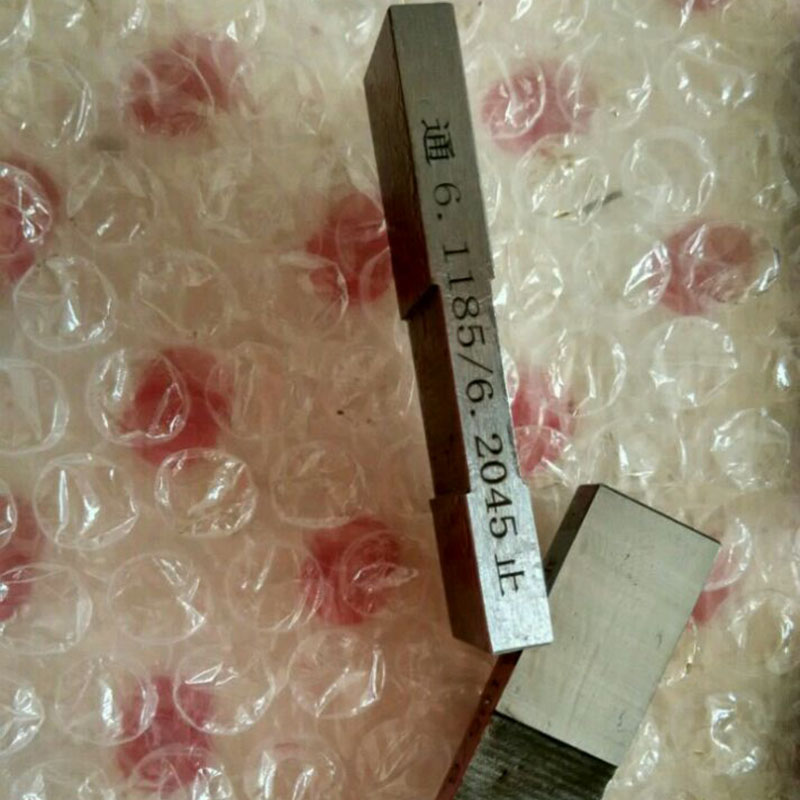अक्टूबर . 17, 2024 01:04 Back to list
Understanding Thread Gauge Applications and Their Importance in Precision Engineering
The Use of Thread Gauges in Precision Engineering
Thread gauges are essential tools in precision engineering, serving as the benchmark for measuring the specifications of threads on various components. These instruments are crucial in industries such as manufacturing, automotive, and aerospace, where exact measurements dictate the success of product performance, reliability, and safety. This article will explore the different types of thread gauges, their applications, and the importance of using them correctly.
Types of Thread Gauges
Thread gauges come in various forms, primarily classified into two categories go/no-go gauges and thread pitch gauges.
1. Go/No-Go Gauges This type of gauge consists of two separate tools—a go gauge and a no-go gauge. The go gauge is used to check if the threads on a part fall within acceptable limits; they should fit precisely into the threaded hole. Conversely, the no-go gauge checks if the thread exceeds the permissible tolerances. If the no-go gauge fits, it indicates that the threads are not within specification and the part is deemed unacceptable. The simplicity and effectiveness of go/no-go gauges make them a staple in the industry.
2. Thread Pitch Gauges Thread pitch gauges allow for the measurement of the distance between threads, known as pitch. These are typically a series of blades with varying saw-like teeth that correspond to different thread pitches. By aligning a threaded component with the appropriate blade, engineers can quickly determine the pitch of the thread, ensuring that it matches planned specifications.
Applications of Thread Gauges
use of thread gauge

Thread gauges find applications in various stages of manufacturing processes. In the initial engineering phase, designers rely on precise thread specifications to develop parts that will fit together seamlessly. During production, thread gauges help quality control inspectors verify that each component meets the specified tolerances. This is particularly important in industries where structural integrity is paramount.
For example, in the automotive sector, the threads on components such as bolts and valves must be precisely measured to ensure they can withstand operational stresses. Similarly, in aerospace, even the slightest deviation in thread measurements can lead to catastrophic failures. Thus, thread gauges play a vital role in maintaining high safety and quality standards.
Importance of Correct Usage
Using thread gauges correctly is essential to avoid costly mistakes during manufacturing. Proper training in using these tools is crucial to ensure accuracy in measurement. Operators must be familiar with the gauge's proper handling and maintenance. For instance, failing to keep gauges clean can result in erroneous measurements. Additionally, frequent calibration of gauges is necessary to maintain their accuracy over time.
Moreover, the selection of the right gauge for the specific application is crucial. Using the incorrect gauge can lead to misleading readings and potentially compromised components. Therefore, understanding the thread standards such as Unified National Thread (UN), Metric Thread (M), and British Standard (BS) is essential when selecting the appropriate gauge.
Conclusion
In conclusion, the use of thread gauges is an indispensable practice in precision engineering. Their ability to ensure that threaded components meet rigorous standards is crucial for maintaining the quality and reliability of finished products in various industries. With the right knowledge and adequate training in the use of these gauges, manufacturers can enhance their production processes significantly, reducing the likelihood of errors and ensuring customer satisfaction. As industries continue to evolve, the importance of precision measurement tools like thread gauges will only increase, emphasizing the need for stringent quality control in engineering practices. Thus, investing in accurate thread gauging methods is not just a procedural necessity but a strategic advantage in competitive markets.
-
Welding Table Cast Iron Surface Finish GuideNewsJul.01,2025
-
Valve Types for Industrial ApplicationsNewsJul.01,2025
-
Types of Strainer for Industrial ApplicationsNewsJul.01,2025
-
Types of Bore Gauge for Precision MachiningNewsJul.01,2025
-
Safety Standards in Welding Fabrication Table Manufacturing ProcessesNewsJun.30,2025
-
Impact of Temperature Fluctuations on Ring Gauge AccuracyNewsJun.30,2025
Related PRODUCTS









